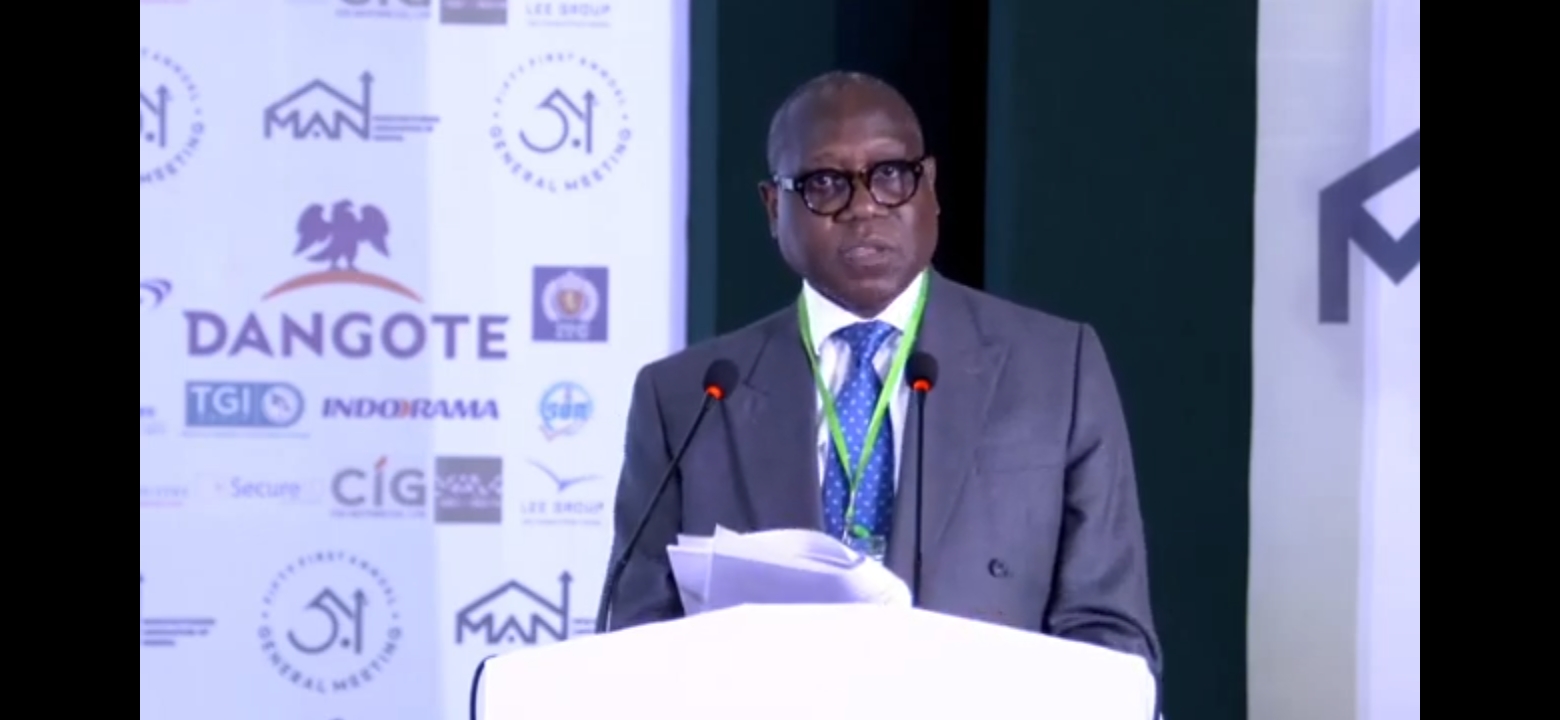▪︎
Olusegun Aganga, a former Minister of Industry Trade and Investment, has fingered the lack of continuity of industrial policy by successive governments as the problem hampering the growth of the sector in Nigeria.
” The manufacturing sector’s contributions to the GDP in other countries are above 25 percent but in Nigeria, it’s is below 10 percent.
That is not where we should be as a nation,” he said .
He disclosed this in a keynote address he delivered during the 3rd Adeola Odutola Lecture / Presidential Luncheon, organised by the Manufacturers Association of Nigeria (MAN), to mark its 51st Annual General Meeting (AGM).
In the speech, ‘Setting The Agenda for Competitive Manufacturing under the AFCFTA : What Nigeria Needs to Do, Aganga said, ” Policy continuity is the problem of the manufacturing sector in Nigeria. We are de-industrialising rather than getting bigger.
Continuity is key; it is our major problem not plans. We have long term plans but very short implementation.
China and other nations are on their 4IR plans but unlike Nigeria, South Africa has an automobile policy it reviews periodically and enhances, and has been implementing rigorously for more than 60 years.
The nearest we have done is in the cement industry. We keep on changing them and stopping them.
South Africa has the discipline to sustain theirs for 60 years.
At a particular time, South Africa accounts for 95 percent of most of the exports to the United States of America under the African Growth and opportunity Act (AGOA), exporting cars and spare parts.
In 1980, China was the 7th largest country in manufacturing GDP with USD305 billion, while the USA was then at USD2.68 trillion.
In 1978/79, China commenced the implementation of its industrial revolution plans. They were rigorously implemented over 35 years and the results were astonishing.
It recorded an average growth of 10 percent for many years and now China is the largest economy in the world in with over USD25.7 trillion and is the industrial power house today.
That is what manufacturing does and that is what Nigeria is missing.
That is the consequences of the lack of continuity of industrial revolution plans.”
He recalled that the best years of industrial sector in Nigeria was between 2011-2014. The sector recorded 17.8 percent from 4 percent in 2011.
The double digits growth was maintained every year and reached a peak of 24 percent in 2012.
This was the period we increased the capacity of cement productions from 11 million metric tonnes to 32 million metric tonnes and became a net exporter of cement.
That was when there were active collaboration between the governments and the Manufacturers Association of Nigeria .
Nigeria has been deindustrializing rather than improving. When the government is supporting industrialisation, the industries respond positively and we all benefits.
From 2015, we started getting negative growths. That is the story of manufacturing outputs in Nigeria. If you look at this numbers (table) from 2016, we started getting negative growths .

” Manufacturing sector started getting negative growths from 2015“
We have been deindustrializing rather than improving and getting bigger.
The manufacturing sector’s contributions to the GDP in other countries are above 25 percent but Nigeria is below 10 percent.
That is not where we should be as a nation.
Underpinning all this is the business environment, an environment where the inflation rate is at high levels and the exchange rate is volatile , and a large percentage of our national income is being spent on debts servicing , cannot stimulate our economic needs.
《South Africa has an automobile policy it reviews periodically and enhances, and has been implementing rigorously for more than 60 years.》
Bring Back The NCC
Also, it us important to reconstitute the National Competitiveness Council (NCC) because it has proven to be one of the most successful approaches to institutionalised private and public dialogue on Competitiveness, globally.
That was the reason we set it up in 2014, but, unfortunately, it was discontinued when I left the government.
The purpose of the NCC is to provide the platform for the constructive public-private dialogue on Competitiveness and providing information on the strong linkages between national competitiveness and national growth , population propensity and the business community.Update And Implement The NIRP
Almost all the global exporters Nigeria is competing with have industrial revolution plans. For instance, China , the largest exporters of goods to Nigeria, has already commenced made-in- China 2025 plans; Germany, too has been promoting its industries 4.0 revolution plan. Likewise South Africa, Morocco and Egypt, particularly in automotive, agriculture and petrochemicals.
There is no better time than now for Nigeria to commence the rigorous implementation of its own industrial revolution plan.
The NIRP can play a role like the Saudi Arabia’s SABIC.Inflation and exchange rate
On Inflation and the exchange rate, Aganga said , ” The Central Bank of Nigeria cannot tame the rising inflation trends alone. Go and look at the causes of Inflation and exchange rates, you would discover that CBN alone cannot address these problems. You will need a team of economists to get it done.And this is what I am proposing for this country to do; CBN should do its best but CBN alone cannot deliver single digits inflation.

